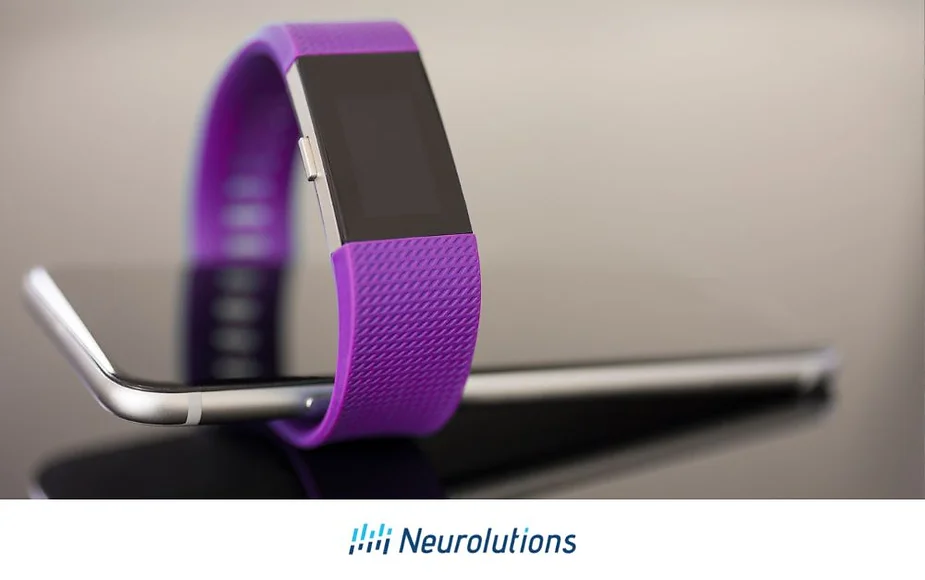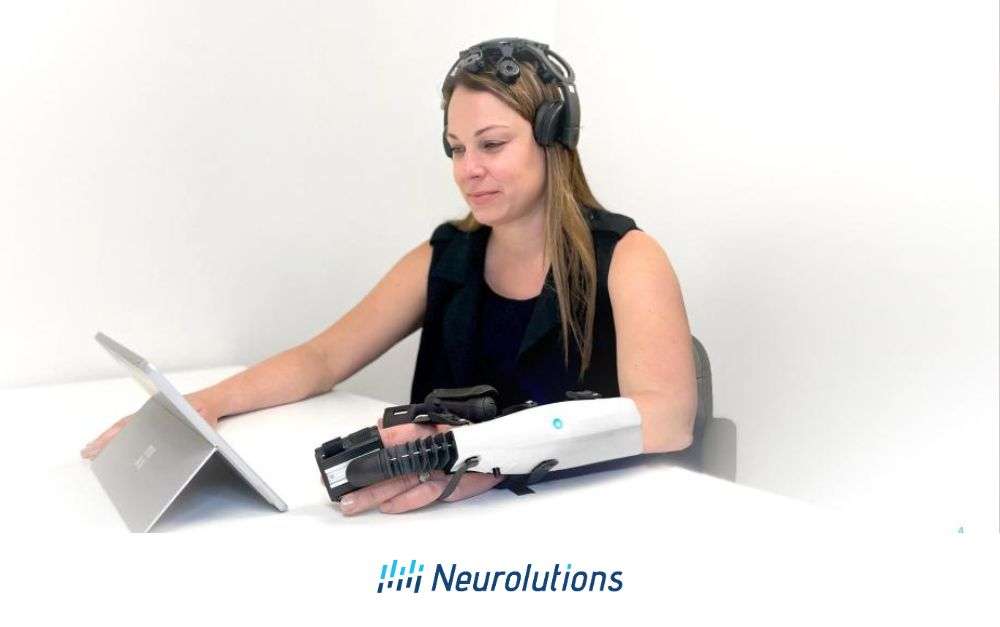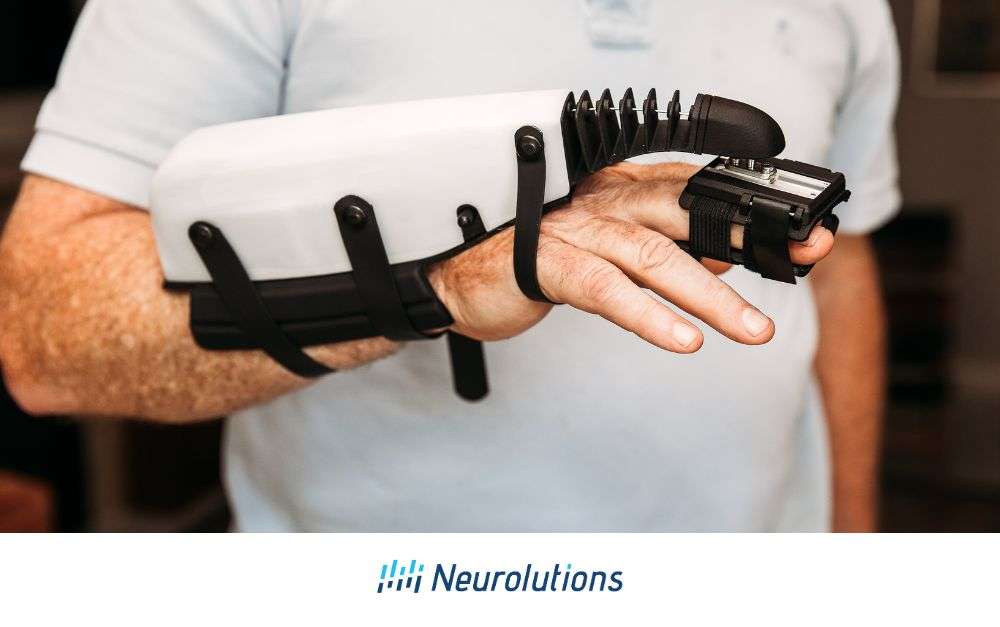Stroke recovery is a difficult journey, but the incorporation of fitness trackers in the rehabilitation care plan program may improve successful outcomes.
In this overview, you will learn more about fitness trackers and their potential benefits to monitoring your health- especially your heart- during stroke recovery for you or your loved one.
What is a Fitness Tracker and How Can It Help with Stroke Recovery?
Fitness trackers are wearable devices that contain sensors that measure and monitor signals from our bodies to provide information about health and wellness.
While the first exercise trackers were invented nearly 60 years ago to keep track of daily steps to combat obesity, today’s fitness trackers are capable of far more than counting steps.
Modern fitness trackers have the utility to collect medical data that contributes to overall health, including:
- Heart rate
- Heart rhythm
- Sleep patterns
- Blood pressure
- Blood sugar levels
- Calories burned
- Step count
- Standing periods
- Exercise modes tracking
- Stress tracking
- Temperature
- Respiration and pulse ox
- Hydration tracking
- Energy level metrics
- Seizure detection
- Motion sensing/fall detection
- General location using GPS
- ECG monitor (electrocardiograms)
It is difficult these days to scan a crowd and not notice a fitness tracker worn on the body. A 2020 study done by Pew Research found that 1 in 5 Americans use wearable fitness trackers or smartwatches (1), and this number is expected to grow.
There are several types of wearable fitness trackers:
- wrist-based (e.g. smartwatch, band, bracelet)
- chest strap
- headband
- headset
- cameras
- rings
- hip-based pedometers
- ankle/leg straps
- Miscellaneous body locations (e.g. earlobe, lip)
As we can only anticipate with the explosion in tech innovations, fitness trackers will continue to become more versatile as the mind can imagine and as the market demands.
How Fitness Trackers Give You the Best Possible Insight into Your Heart Health During Stroke Recovery
Whether you or your loved one had a stroke 5 days ago or 5 years ago, here are five commonly recognized vital signs that need to be monitored for stroke prevention and stroke recovery tracking. Vital signs represent essential functions of your body.
Fitness trackers give insight into your heart health as these vital signs provide a glimpse of risk for a cardiac event, such as a heart attack, stroke, or heart disease (i.e. cardiac risk assessment). Many strokes can be prevented if you or your physician have the information needed to make medical decisions.
5 Vital Signs Measured by Fitness Trackers
- Heart rate
- How many times your heart beats per minute and provides information about your heart working.
- Pulse oxygen/oxygen saturation
- How much saturation of oxygen is in the bloodstream provides information about how your cardiovascular system is working.
- Respiration rate
- How many times you breathe in and out in a minute provides information about how well your lungs are working.
- Blood pressure
- The pressure force of blood on artery walls as the heart pumps. Blood pressure tells us how the heart has to work to supply blood to vital organs.
- Temperature
- Body temperature indicates how well your body can get rid of heat. Normal body temperature is 97.7–99.5 °F (36.5–37.5 °C)
Medical experts and researchers have also designated “walking speed (WS)” as a “6th vital sign” as it has been regarded as a “valid, reliable, sensitive measure appropriate for assessing and monitoring functional status and overall health in a wide range of populations.” (3) Mobility and gait impairments are common after stroke, and it is important to address deficits that influence walking speed. Fitness trackers collect data in order to provide more insight into the nature of the problem. This will aid in goal setting and track progress on metrics- especially cardiovascular metrics- that correlate with walking speed.
Benefits of Using a Fitness Tracker to Manage Your Heart Health After a Stroke
Certain regulatory-approved fitness monitors have the capacity to connect personal health information directly to your healthcare provider using the cloud or other digital highways. These monitors alert the provider in the event the tracker senses bodily signals outside acceptable limits. If both you and your provider are notified in the event of an abnormal cardiac event (heart rate or rhythm out of acceptable ranges).
Two overarching goals of fitness trackers for heart health management:
1- save lives
2- reduce the financial burden on our healthcare system with timely detection of medical problems and personal health management.
Other general benefits:
- Allows the individual to be an active participant in medical care using available knowledge
- Provides objective and accurate health metric information necessary for the decision-making of the provider
- High ease-of-use and portable
- Automatic recording; conscious “effort” is not necessarily required
- Allows patient and provider to be remotely connected with mutual consent if the device allows
- Increases satisfaction of patient experience with healthcare
- Permits continuous healthcare outside the walls of the doctor’s office and hospital
- Coordination among healthcare providers
- Personal training, fitness, and weight management
There are some benefits to managing heart health using a fitness tracker that is very specific to stroke survivors. This is especially important when the root cause of the stroke can be traced back to modifiable risk factors related to heart health.
Here is why you may want to consider using a fitness tracker if you are rehabilitating from a stroke and want to optimize your stroke recovery:
- Fitness trackers are known to increase activity levels. Physical activity is important for individuals with stroke because it can help increase aerobic capacity, strength, motor coordination, and endurance needed to regain functional skills and independence.
- Fitness trackers may promote confidence to increase your physical activity in a safe, progressive manner.
- Fitness trackers may help you adjust your physical exertion levels (i.e. rest to working) based on the information provided by the fitness tracker. Understanding heart rate zones and staying within safe levels that still support physical fitness and cardiac health goals is an important part of rehabilitation.
- Fitness trackers can remind you when you have been inactive (in one place) too long. This encourages individuals to change positioning to take pressure off load-bearing soft tissue and joints while distributing pressure on other body parts that need to work, promotes flexibility and range of motion, and may reduce discomfort from prolonged sitting, and standing.
- Fitness trackers may motivate those in stroke recovery to exercise. Having knowledge of the ups and downs via digital monitoring of health metrics promotes accountability and may persuade individuals to alter their behavior. For example, if a decline in the number of days the exercise was noted in the graphic display and it bothered the individual that they didn’t meet their goal, the individual may make sure to exercise consistently so they have the feeling of satisfaction rather than disappointment or guilt.
- Although many more remote monitoring devices will “plug” us directly into the healthcare system and insurance carriers, most patients continue to independently monitor their data from their smart devices. However, having this information helps the patient address specific concerns with the healthcare provider noted by the individual that the provider would have never otherwise known.
- Getting quality sleep and rest is vital to the recovery of your brain and heart health. It is estimated that as many as 4 out of 10 individuals suffer from disruptions in sleep cycles after a stroke. Many fitness trackers track sleep patterns. Understanding what is happening at different periods of the sleep cycle can guide decision-making for the treatment of sleep disorders. (4)
Tips for Choosing the Right Fitness Tracker for Your Situation
Choosing the best fitness tracker for stroke recovery takes a little bit of planning when making the right buying decision. To help know what to look for, here are some tips that may help you find the right fitness tracker for your needs for stroke recovery:
Must-Have Fitness Tracker Features for Stroke Survivors
- Heart Rate Monitoring With Alerts
- Because cardiac events often precede a stroke, you need to be notified if your resting or active heart rate elevates and stays too high or drops too low.
- You will also gauge how hard your heart is working during activities that place stress on the body, such as exercising.
- Notifications To Move And Stand If Prolonged Inactivity Has Been Registered
- Too much rest is bad for the heart. Just as muscle strength and bone density improve with activity and exercise, heart health improves when the heart recognizes a “good” increase in stress over a period of time. It is easy to lose track of time and to get cozy in one place. You will get a reminder to stand and move if the sensor has not detected a change in velocity/position in space and an adjusted spike in heart rate. Note: the sensor is smart enough to know if you are sleeping or awake, so do not worry about an alarm waking you from your slumber.
- Fall Detection
- People who have had a stroke are at higher risk for falls. Falls can be disastrous to the individual and our healthcare system. Find a fitness tracker with built-in GPS and velocity sensing. Although it may not fully replace a life-tracking device worn in the home for certain individuals, some devices may call 911 or the programmed emergency responder even if the fall occurs outside of the household.
- Sleep Monitoring
- Sleep is a time for repair, memory consolidation, and the promotion of neuroplasticity. Not getting enough sleep or having a poor night’s sleep can have a detrimental impact on quality of life, but for someone recovering from a stroke, it needs to be considered as important as getting exercise. The sensors read your sleep cycles and can determine periods of time when you are in light sleep or deep sleep. Oftentimes, the pulse oxygen track is paired with the breakdown of your sleep quality and time spent sleeping.
- Respiration Monitoring With Alerts
- With respiration monitoring, you will not only know what your breaths are per minute but may also be cued to adjust your breathing using calming and tranquility exercises. This can be useful for adjusting important neural pathways that regulate breathing, heart rate, and stress responses.
- Pedometer Tracking Steps And Times Spent Walking
- If you are able to walk, work towards improving the distance, speed, and time you spend walking. Your tracker should house this information so you can have awareness of your baseline and work towards your goals. If you are ambulatory, strive to increase your steps per day until you at least reach 10,000 steps per day.
An important thing to mention is that although there are guidelines for what sensors can and cannot advise in the absence of actual medical guidance from a healthcare professional, fitness trackers are doing more than just monitoring- they are starting to interpret and provide counsel.
Fitness Trackers List with Links
Before making any purchase, it is important to research the product to make sure it has the features you are looking for and suits your needs based on affordability, comfort, features, safety, accuracy, reliability, and aesthetics.
Complete a google search, read the reviews, and talk with friends and family that may own one to get their input. There are many blogs that highlight the pros and cons of fitness trackers that are worth analyzing in order to make a buying decision.
Note that Neurolutions does not have affiliations or conflicts of interest with any brands or companies. Links are strictly for educational purposes only.
Fitness Tracker Watches
Fitness Tracker Wristbands
Fitness Tracker Headbands
Fitness Tracker Chest Straps
Fitness Tracker Rings
Prevention Circle Wellness Ring
Fitness Tracker Ankle Straps and Shoe Inserts
Fitness Tracker Clip on Pedometers
Digital Healthcare Transformation using Wearable Sensors and Fitness Trackers
The technology industry has been paying close attention to trends in healthcare. There is a high demand (and money) for companies to research, develop, commercialize, and market fitness trackers and wearable sensors to bring it to the consumer. While there are companies that have a sole focus on a product line dedicated to fitness trackers, IT groups (e.g. computer and phone companies) have created wearable sensing spin-offs that connect their machines to their customers.
Health providers and insurance companies are woven into the fabric of digitized health care, remote monitoring, and telehealth. Insights conducted by the College of Healthcare Information Management Executives (CHIME) for AT&T Business have found that “virtual care remains a top priority moving forward. “ Surveys revealed that 22% said they were most interested in telehealth and remote patient monitoring solutions over the next 1-3 years. (5)
Of course, the patient is always central to the future of our healthcare. With the rise of smart biosensors, it begs the question: Is there a rise of “smart patients?”
Most of us agree that the answer is yes.
The combination of the push to exercise, digital medicine, the internet, and media hype to assert control over one’s health has motivated a new generation of patients to become knowledge seekers.
Hence, the patient- or consumer- has been influenced by this call to action to privately manage his or her own health, when possible. The partnership between the provider and the patient allows the patient to be more informed about their healthcare options. It also allows them to be more engaged in their own healthcare decisions, and to have a more open dialogue with their healthcare provider. This approach to healthcare has been shown to lead to better outcomes and improved patient satisfaction. If done responsibly, the patient’s newfound medical empowerment promotes daily monitoring and accountability for personal health and wellness.
References
If your doctor has asked you to pay particular attention to certain metrics on your fitness tracker, it is important to follow your doctor’s instructions.
- Vogels. About one-in-five Americans use a smartwatch or fitness tracker. Pew Research Center, Washington, D.C. https://www.pewresearch.org/fact-tank/2020/01/09/about-one-in-five-americans-use-a-smart-watch-or-fitness-tracker/. (2020).
- Kim EY. Patient Will See You Now: The Future of Medicine is in Your Hands. Healthc Inform Res. 2015 Oct;21(4):321–3. doi: 10.4258/hir.2015.21.4.321. Epub 2015 Oct 31. PMCID: PMC4659891.
- Middleton A, Fritz SL, Lusardi M. Walking speed: the functional vital sign. J Aging Phys Act. 2015 Apr;23(2):314-22. doi: 10.1123/japa.2013-0236. Epub 2014 May 2. PMID: 24812254; PMCID: PMC4254896.
- St-Onge MP, Grandner MA, Brown D, Conroy MB, Jean-Louis G, Coons M, Bhatt DL; American Heart Association Obesity, Behavior Change, Diabetes, and Nutrition Committees of the Council on Lifestyle and Cardiometabolic Health; Council on Cardiovascular Disease in the Young; Council on Clinical Cardiology; and Stroke Council. Sleep Duration and Quality: Impact on Lifestyle Behaviors and Cardiometabolic Health: A Scientific Statement From the American Heart Association. Circulation. 2016 Nov 1;134(18):e367-e386. doi: 10.1161/CIR.0000000000000444. Epub 2016 Sep 19. PMID: 27647451; PMCID: PMC5567876.
- https://www.business.att.com/content/dam/attbusiness/reports/digital-transformation-in-healthcare-survey-analysis.pdf




